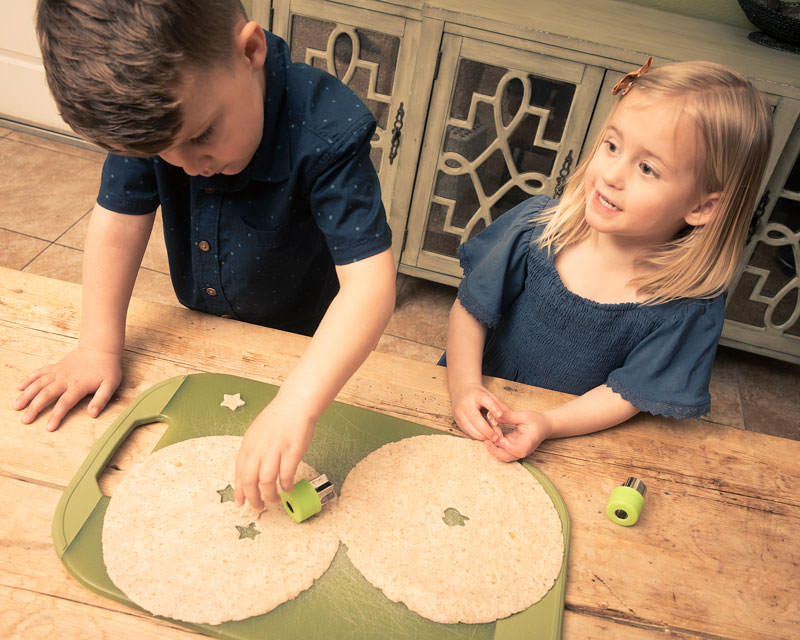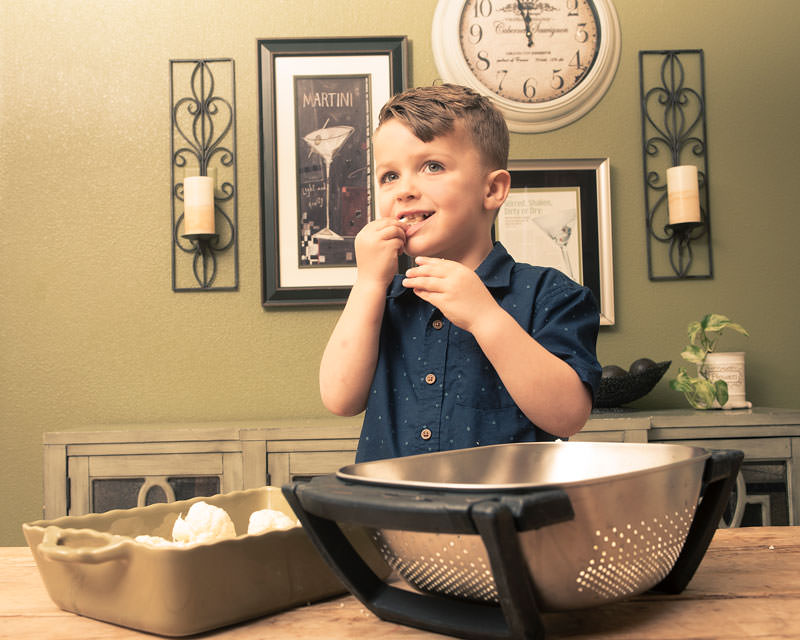Raising little foodies with big palates.
My family was eating dinner at the kitchen table one night this spring when my 3-year-old son, Rowan, claimed he was finished eating vegetables and would resort to a diet of just chocolate and treats. At that moment, I was attempting to feed Asher, our 5-month-old son, a bite of smashed avocado when he went completely lockjaw on me. Luckily, that afternoon I’d been offered this story to write, and I was relieved at the opportunity to learn new ways to get my children to eat different foods.
Did you see what I just did there? I wrote, “get my children to eat different foods.” That is where this journey begins.
As Barbara Cox, registered dietician/nutritionist with ABC Nutrition in Reno, puts it, “As a parent, your job is to offer the food, and as children, their job is to decide if and how much they will eat … Typically, what happens is parents get really worried, especially if you have a non-eater who is picky, and they want them to finish this beautiful plate.
“If the parents get involved in dictating if and how much (children) are going to eat, it becomes a food battle,” Cox continues. “That is one that the parents will not win. The child chooses, and if they aren’t hungry, they may not eat anything at all.”
Cue my anxious nod.
While this sounds easy enough, if your family is anything like mine, the thought of setting a plate down for my toddler to choose what he will eat and being content with the result is no simple feat. As much as the food may be a change for the children, it can be even more of an adjustment for their parents. But, according to Cox, perseverance is key.
“No matter their age, you will have more success if you don’t force the issue and make the meal fun and nutritious,” she says.
Anatomy of a Perfect Plate

Dr. Jose Cucalon, assistant professor of pediatrics at the University of Nevada, Reno School of Medicine and general pediatrician at Renown Children’s Hospital in Reno, urges parents to be mindful of what an adventurous eater actually is.
“An adventurous eater is somebody who will try different dishes, will try different spices, and takes advantage of all the micronutrients that come with a varied diet,” Cucalon explains. “It is normal to have certain preferences, but people should be open to trying everything — especially when it comes to vegetables and fruits.”
Cucalon notes that with children and teens, this expansive appetite for different foods can take a while to form, but it’s good to start with a simple formula when preparing a plate: half fruits and vegetables, plus one-quarter protein, plus one-quarter simple and complex carbohydrates. He also says that one or two servings of calcium each day are key, but that can come in the form of a glass of milk with a meal or a little cheese added to the plate.
Keeping the ratio in mind, parents should introduce a variety of new foods alongside those already known.
“There are foods that kids will like right off the bat, but others may take a little longer,” Cucalon says. “Different textures, flavor profiles, or presentation may not be appealing. What parents can do is keep on offering the new foods, even if it takes multiple tries. Our taste buds are constantly evolving, and familiarity makes foods less intimidating.
“One of the reasons kids stop trying different things is because parents start sticking to what they know (children) like,” he adds.
Responsible Snacking
Plate formula. Check. New foods. Check. Perseverance. Check. What about snacking?
First, Cucalon reminds us that it’s best to have children hungry for breakfast, lunch, and dinner, and to avoid snacking up to an hour before meals. Keeping the schedule in mind, Cox says she urges parents to let children have a choice in what they snack on.
“Snacks can be more fun foods, but it’s important to include a protein, fat, and carb,” she says. “At mealtime, they should have nutrient-dense foods offered, but snacks can be more lenient.”
She points to a quick example: a granola bar with string cheese. “Yes, the granola bar is processed, but this is where flexibility comes in.”
Tips From Moms
Meagan Crowell is a good friend of mine with two girls, three-year-old Adelyn and baby Elina. I’m always impressed with the foods Adelyn eats and her no-fear attitude when trying new morsels. Her courageous spirit toward food often encourages my son, Rowan, to take bites, too.
With a background in education and excitement for positive dining experiences, Crowell has a few great tricks up her sleeve.
“As a family, we cook very different meals, and I try to not do the same protein, vegetable, or starch in the same week,” she says.
Her husband, Brandon Crowell, is vice president of operations for Sierra Gold Seafood in Sparks and regularly brings home different fish and seafood.
In addition to variety, Meagan likes to mix up the way she prepares and serves meals, often with a child-friendly approach.
“Adelyn loves to help me make pretty much every meal,” she says. “She’s always interested in the ingredients and will try things as we’re cooking.”

Meagan uses cookie cutters to make shapes, skewers fruits and vegetables, adds dips, and presents foods in colorful containers. She also prepares foods with various spices and often skips the steaming method for vegetables.
“We pretty much roast all of our vegetables with salt, pepper, and olive oil,” she explains. “We’ll cook cauliflower or Brussels sprouts and Adelyn will devour them. My husband loves them that way as well.”

For a quick grab, Meagan keeps low-sodium canned vegetables on an accessible shelf in her pantry.
“Adelyn will ask to open the different cans, mostly because it looks fun, but she really likes canned green beans, kidney beans, chickpeas … You name it, she’ll eat them straight from the can. I’ve also had a lot of success with frozen vegetables right out of the freezer. She loves to eat them raw.”
Like Cox and Cucalon, Meagan encourages parents to constantly try new techniques in a fun way. In addition to a healthy diet, children will benefit from an open mind with food.
To learn more about nutrition and healthy eating habits, visit Healthychildren.org and Choosemyplate.gov.
Writer Heidi Bethel is excited to introduce new foods to her sons, Rowan and Asher. After using some of the aforementioned tips, she has already had success expanding their palates. Rowan especially loves food shaped by cookie cutters.


